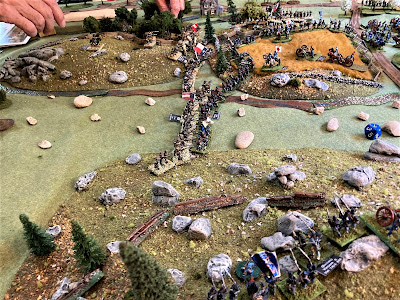On Monday I went on a 6-hour day sail on the tall ship
Elissa,
based in Galveston, Texas. The
Elissa was built in 1877, has an iron
hull, and 19 sails, some square, some triangular. She hauled cargo around the
world, including Galveston where there is one record from 1882 of the
Elissa
unloading a cargo of bananas from Central America and reloading with 500 bales
of cotton bound for England. A workhorse ship, not a warship, not a pleasure
ship. Only one head (toilet) to serve the working crew of about a dozen sailors
back in the day. No cannons. She sailed after the days of the Jolly Roger. The pirates
were building railroads across America instead.
Elissa was rescued
(bought) in 1977 from a ship scrapyard in Greece waiting to be cut apart for
her iron hull. She was towed to Galveston where for the next five years she was
given a new life. In 1982 she opened as a floating museum at Pier 21 in
Galveston, and she sails every April.
We sailed from the pier at 10:00, and by 11:30 we left the
Houston ship channel. In the Gulf we encountered bigger waves, I got a little
seasick, but didn’t lose my lunch. I am a landlubber, for sure. I did look up
at the solar eclipse, almost lost in the shifting cloud cover over the Gulf of
Mexico.

Mostly though, I gazed upward at the masts, sails, and
rigging as crew members climbed the rope ladders attached to the tall masts to
the cross-yards (timbers) from which the big rectangular sails hung. Up to
eight crew on each yard shuffled outward, clinging to the thick tapered yard, standing
on a single rope under each yard to furl and unfurl the big canvas sails. I was
spellbound by the slow motion dance those men and women performed, 50 to 90
feet up in the air, just doing the tasks needed to sail the boat. Reaching
around the Douglas fir tree trunk yards to wrap the ties around the sails, or
unwrap them. All the while the ship did this little up-down, side-to-side
motion that turned me green sitting on the damned deck.

From the deck I listened to commands passed along from the professional,
itinerant captain, to his key mates, and on down to the local volunteer crew
members, all of whom had undergone 25 Saturdays of training during the past
year. Crew members wore color-coded shirts.
white, black, green, red, blue. About half the crew were women and the age
range looked to be from the 20’s to 50’s.
The culture of sailors was evident even among the volunteers in lots of tattoos
and colored hair. All in all, I witnessed a delightfully varied, joyful and
informal, but utterly focused crew, working like beavers to get us out there in
the Gulf and back again.

The deck of the ship was lined with coils of thick lines
(ropes to us non-sailors). Above the deck, the innumerable, endless lines stretched
tautly between the 298 white wooden blocks (pulleys), 112 of which were
reconditioned during the past year by my good friend and host Dick Gray, during
his 312 hours of doing volunteer maintenance work, thereby earning the
privilege of inviting me along on a day sail which otherwise costs $300—and are
sold out every April. Every adjustment to the set of the sails required deck hands hauling on the proper one line out of the dozens of choices, striving to keep the right tension on the sails. It was a show.
Oddly, I never went below deck to the head or anywhere else.
Dick told me it is mostly a big dark cargo hold, with a little space up front
for the crew to sleep. The kitchen is in a little wooden shack on the deck. Anyway,
since all the action is on the deck and high up the masts, I was content.
The whole day left me sort of ga-ga, not from being seasick,
but from a first-hand, tiny sliver of a look at how the whole world traveled
the oceans on little ships without engines for hundreds and hundreds of years. And
why navies had to impress (kidnap) men to serve on those tall masted ships. And
even after fifty years of reading Hornblower novels and other sailing ship tales
about waging war on the high seas, I shiver at the thought of two fleets of sailing
ships pounding at each other with cannons at point blank range. Mercy.
Lastly, while the Elissa sports no weapons, we did
sail close by a skyscraper size pleasure cruise ship, one of the Carnival Line,
based in Galveston. As the cruise ship left the dock, she was escorted, fore
and aft (front and rear) by two US Coast Guard patrol boats, each with a manned
50-cal machine gun in the bow (front) of the boat. Riding shotgun to intercept
any terrorist boat loaded with explosives, I suppose. I’ve no idea if that
practice is common among cruise lines in 2024, but it sure grabbed my
attention.
Come July when our family vacations in Galveston, I’m going
to take all 12 of us through the Elissa as tourists, and get to see the
head. 😊
There are more photos from my day sail on my facebook page if you are interested.





























